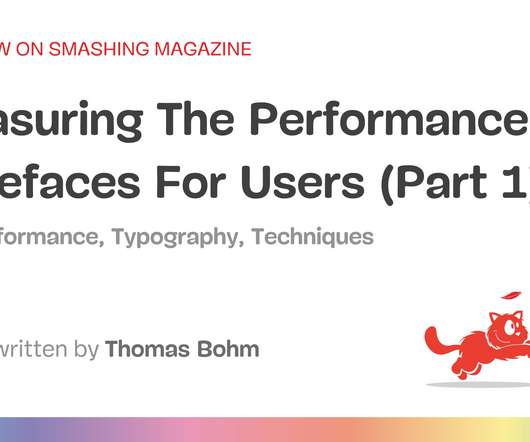Measuring The Performance Of Typefaces For Users (Part 1)
Smashing Magazine
JUNE 3, 2022
Kevin Larson , principal researcher on Microsoft’s Advanced Reading Technologies team, explains: “While I generally agree with you on the importance of objective data, and most of my work has collected reading speed measures of one kind or another, I think there can be interesting subjective data.” — Kevin Larson. Stay tuned!











Let's personalize your content